After both teams finished second in their groups, Canada and Sweden will now meet in the round-of-16 of this year’s FIFA Women’s World Cup. The winner of this game will face Germany in the quarterfinals, but to get there both need to give their very best for at least 90 minutes in what will be an intense fight.
In this tournament, both teams won two games and lost one until now. Canada were able to beat New Zeeland (2-0) and Cameroon (1-0) but lost to the Netherlands (1-2). Similarly, Sweden won their first two games against Chile (2-0) and Thailand (5-1). They lost the last group match against the tournament favourites from the USA (0-2), however, having already qualified for the knockout stage, Coach Peter Gerhardsson had decided to rotate his squad. This makes it difficult to draw conclusions from the game. Most likely, this matchup will show how strong both Canada and Sweden really are.
In March, both teams already faced each other in the Algarve Cup in Portugal in a third-place playoff. That game ended in a 0-0 draw, with Canada winning the penalty shootout. It was a game without any highlights though. Both teams had only two shots on target.
In this tactical analysis, we will explain how both teams might approach this game and what the key will be from a tactical standpoint.
Line-Ups
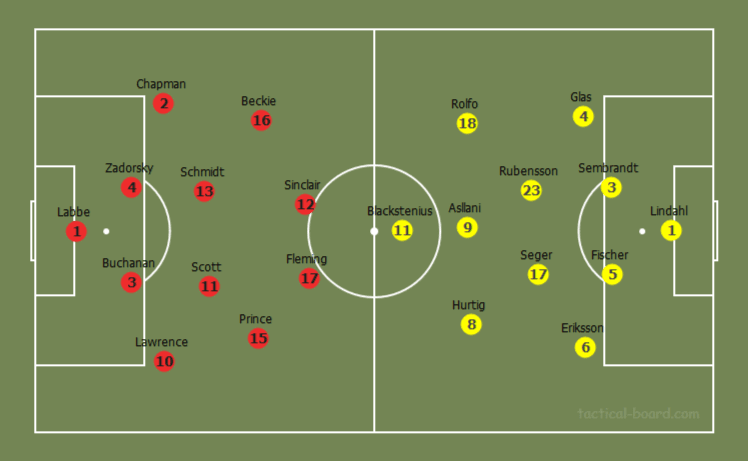
In March, both teams tried a back-three formation. Canada played with a 3-1-4-2 system in that game, while Sweden used a 3-4-1-2 shape. However, as the Algarve Cup was a preparation tournament, we may interpret that as tests without relevance for the upcoming game. In this tournament, Sweden used a back four in every game. Canada occasionally switched to a back three against New Zeeland, but this had game-specific reasons and isn’t applicable to this matchup. They had 70% possession in that game and needed an extra-men in the build-up in a highly offensive interpretation of the 3-5-2. This game will be different though, so we can expect both teams to stick to what they know best.
We can expect Sweden to play in a 4-2-3-1 formation. Up-front, Sina Blackstenius seems to have better cards, but it is also possible that Anna Anvegard will start. Instead of Lina Hurtig, Sofia Jakobsson may also be a valuable option. The other positions seem to be clear.
Canada will most likely play in a 4-4-2 formation. There are not many question marks for Kenneth Heiner-Møller, but maybe he will have some surprises prepared.
Canada need to take Caroline Seger out of the game
Caroline Seger is for sure Sweden’s most important player, despite being already 34 years old. In the build-up, it will be decisive whether Canada are able to prevent her from playmaking or not.
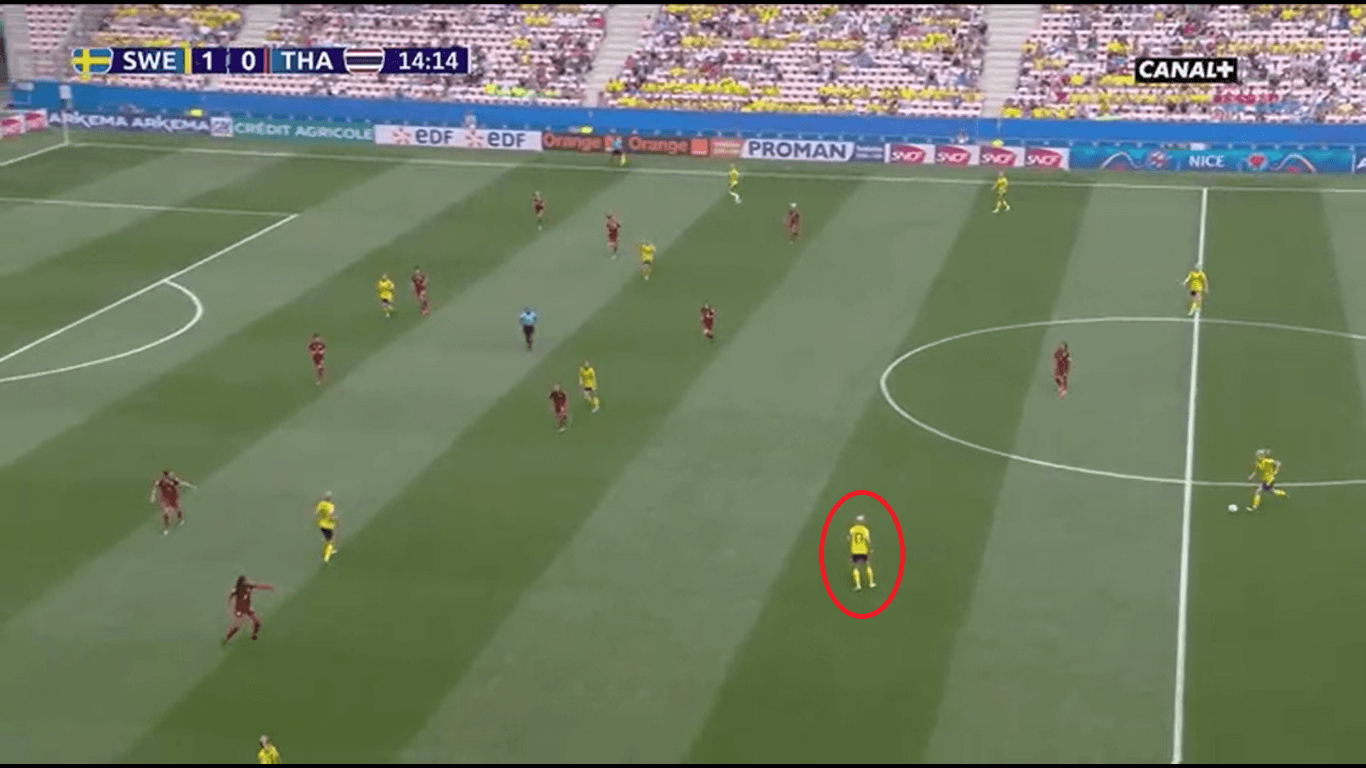
Usually, we see Seger is situations like this one. Even though she could move higher up the pitch here, she prefers to pick-up the ball as early as possible without any pressure, so that she can facilitate the attack. Playing against Sweden, it is critical that the press up-front is effective, taking Seger into the cover shadow. Should she receive the ball nonetheless, there must be immediate pressure on her.
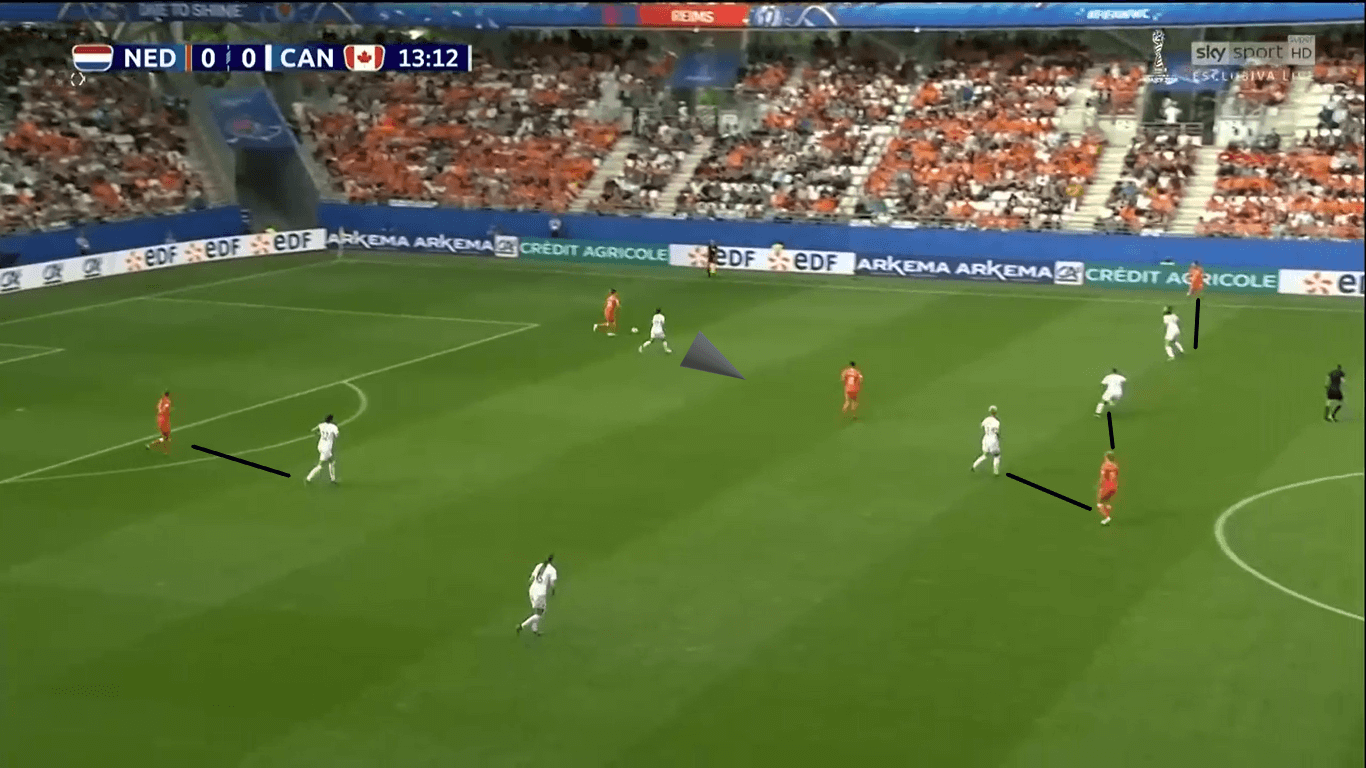
This image may provide one example of how to do that. Jessie Fleming presses her Dutch opponent great and prevents a pass to the defensive midfielder with an effective cover shadow. Christine Sinclair marks the other centre-back, while the midfield four are hungry to attack aggressively.
Counterattacks may be a great opportunity for Canada
If Canada are able to press well and win the ball, their aim should be to counterattack as fast as possible. While against some opponents, it may make sense to decrease the tempo of the game, Sweden are a side that should be attacked fast. In defensive transition, the Scandinavians are sometimes vulnerable. Most times, their backline is positioned high and mostly only two players secure the last line.
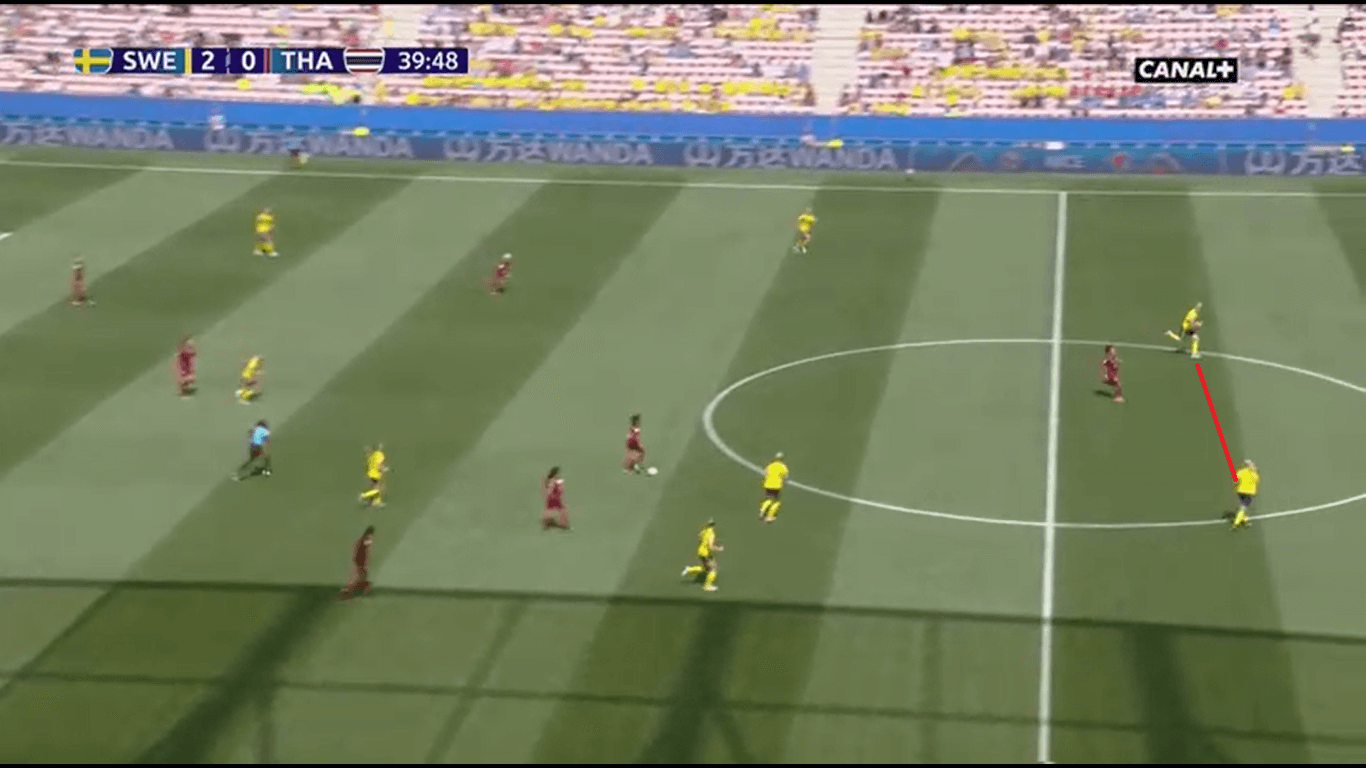
One example can be seen here. At the moment of Thailand gaining possession, Sweden’s back line is even positioned at the halfway line. The counterpress to prevent a fast counterattack is also not existent in this situation since the Thailand player can dribble without any pressure. A long ball to the striker seems promising. In the case of Canada, vertical passes to Christine Sinclair may be a good idea. Sinclair can then either lay the ball off or control it and use her passing skills to put the other attackers in scene.
If the press is not successful, Canada need to make sure to stay compact though. Even if Seger is not in the game properly, Sweden have still a lot of attacking potential. Situations like in the following image should not happen, if Canada want to win the game.
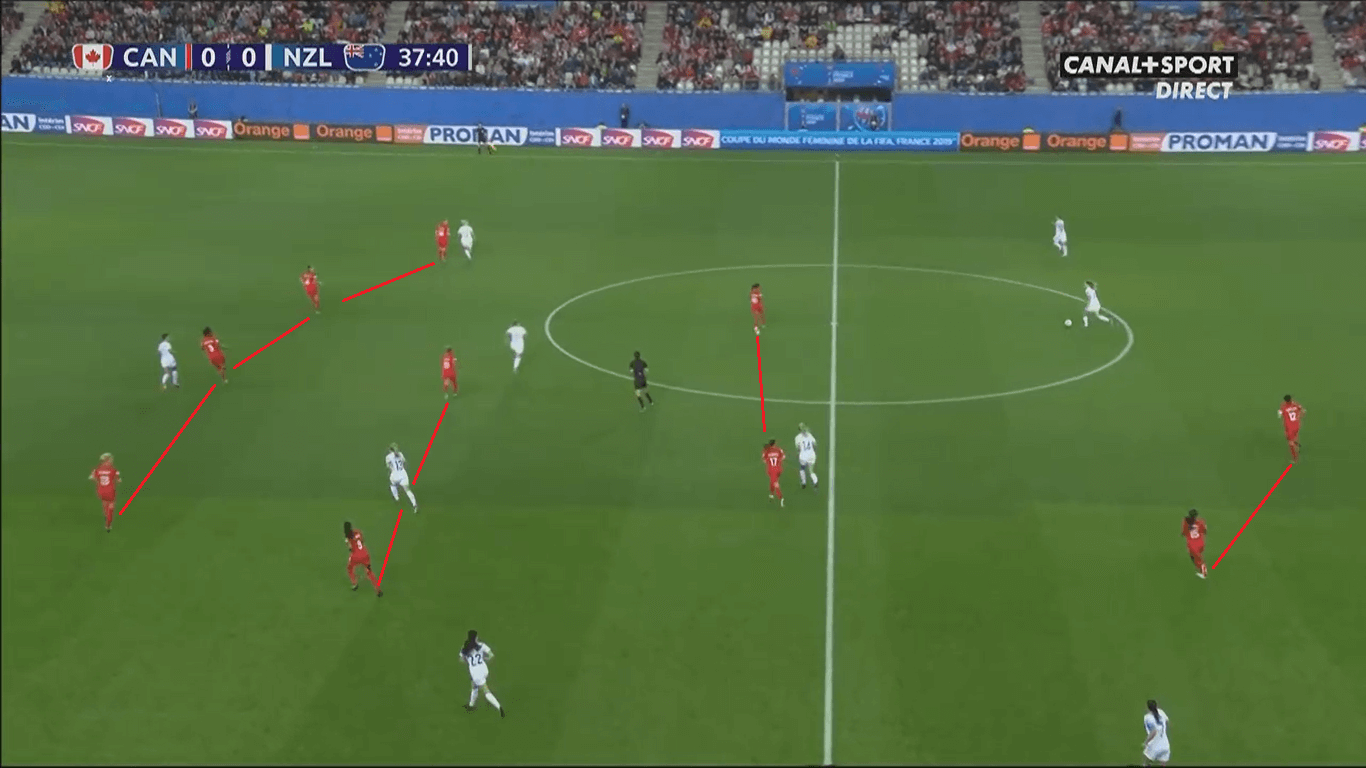
With a midfield line was torn apart into two independent lines, Canada lacks horizontal compactness in this situation. Also, the two strikers are out of the game, which complicates things furthermore. It is vital that Canada stay compact and don’t let such situations happen too often, as Sweden are able to take advantage of it. From Sweden’s point of view, it may make sense to provoke such situations by attracting a press. A short pass to Seger which triggers Canada’s midfielders to move out of position to press her may be followed by a quick shift of playing side.
Sweden need to press Sophie Schmidt
Similarly to the importance of Caroline Seger for Sweden, Sophie Schmidt will be an important piece in Canada’s build-up. If Sweden are able to take her out of the game, it will have an impact on how the game takes shape.
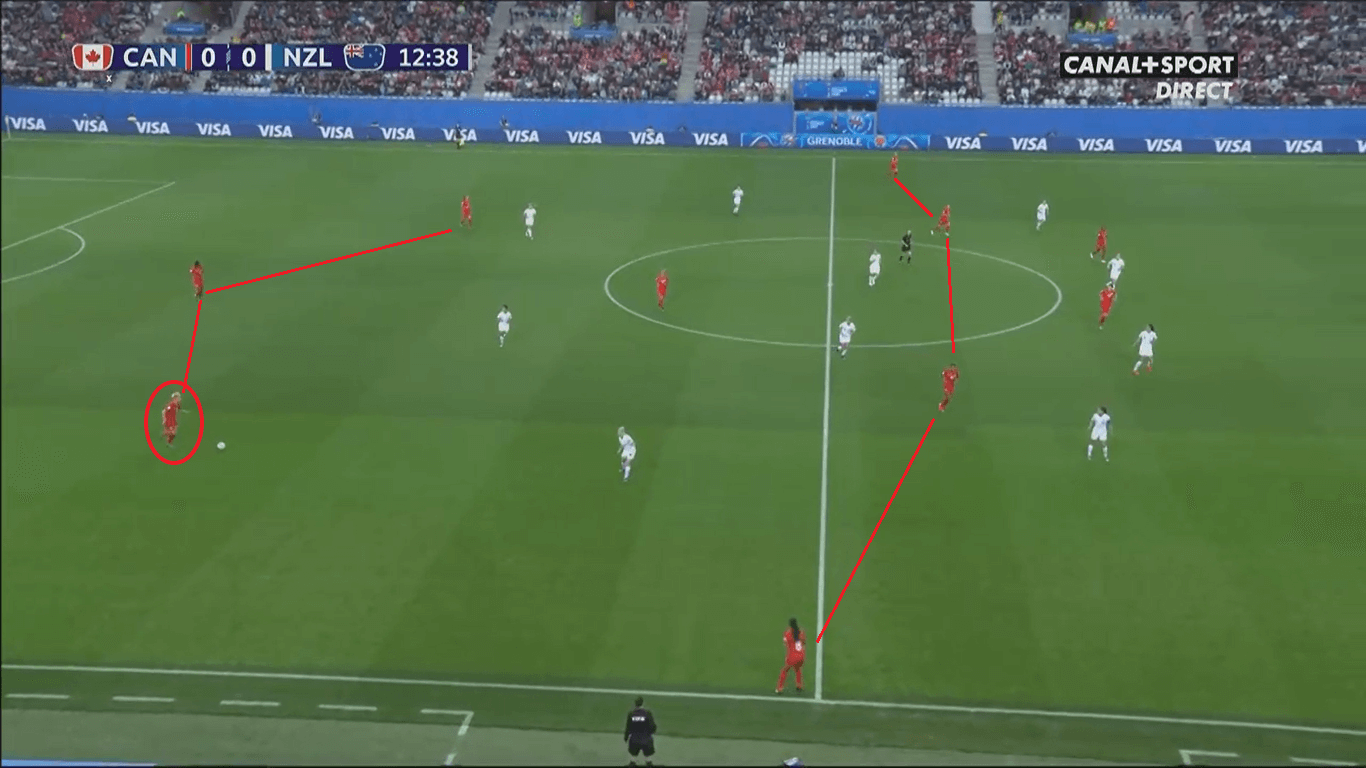
Against New Zealand, she dropped back into the back line to facilitate the game from there. From that area, she was able to control the game. Even though we don’t expect her to play such a role against Sweden, it shows how flexible she is. If the midfield area is too crowded, she may move out occasionally to receive the ball more often.
Although counterattacking appears to be a promising strategy against Sweden, there may be situations where it helps to build-up and control possession, especially if Canada is be leading the game. For Sweden, it is useful to take measures in such a situation and press her. As we also see in this image, the rest of the team focusses on positioning between the lines, but when Schmidt is pressed aggressively, it becomes difficult to get the ball there.
Conclusion
Our tactical preview shows that an interesting game awaits us in the round-of-32 in the FIFA Women’s World cup 2019. In close games, minor details often make the difference. For Canada, it may make sense to stay compact defensively, while taking Caroline Seger out of the game. If they can cut her off from the rest of the team, this could be the key to winning the game. After winning the ball, fast counterattacks should be the way to go.
Probably, they will use Christine Sinclair as a focal point in their offense. For Sweden, moving the ball and the opponent may be important. Canada occasionally shows some defensive weaknesses, which Sweden could exploit. Improvements in the counter press and defensive coverage are also necessary for Sweden. In the end, set-pieces could also lead to decisive situations for both teams, because as we have already said, close games are often decided by small details.

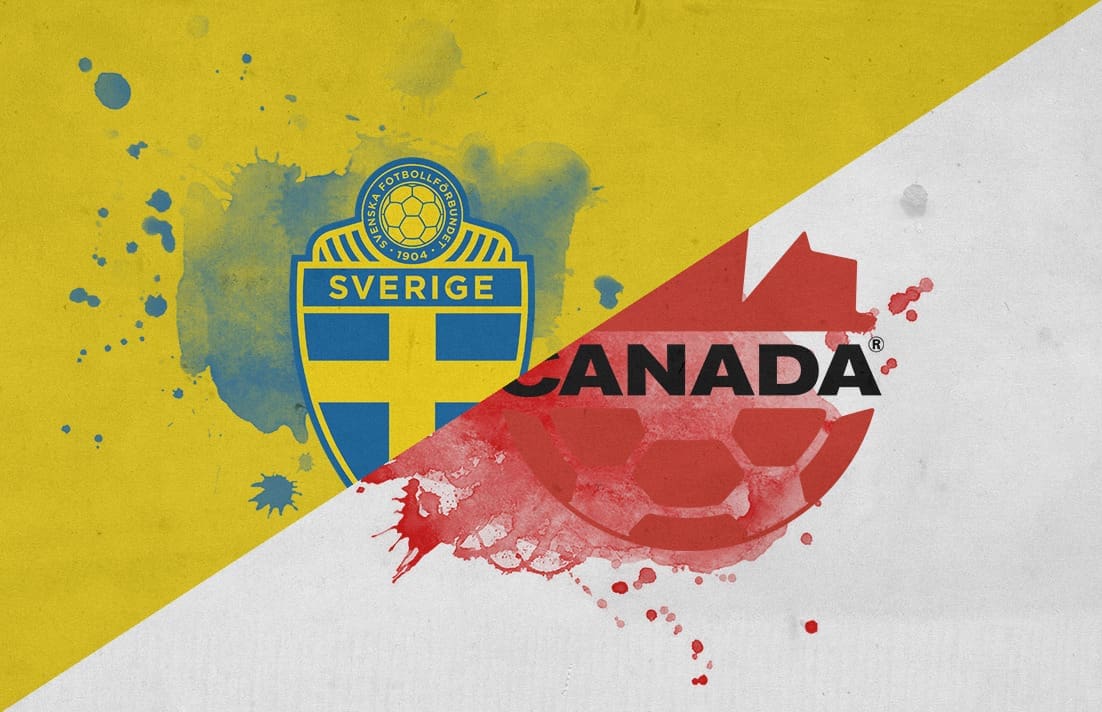



Comments